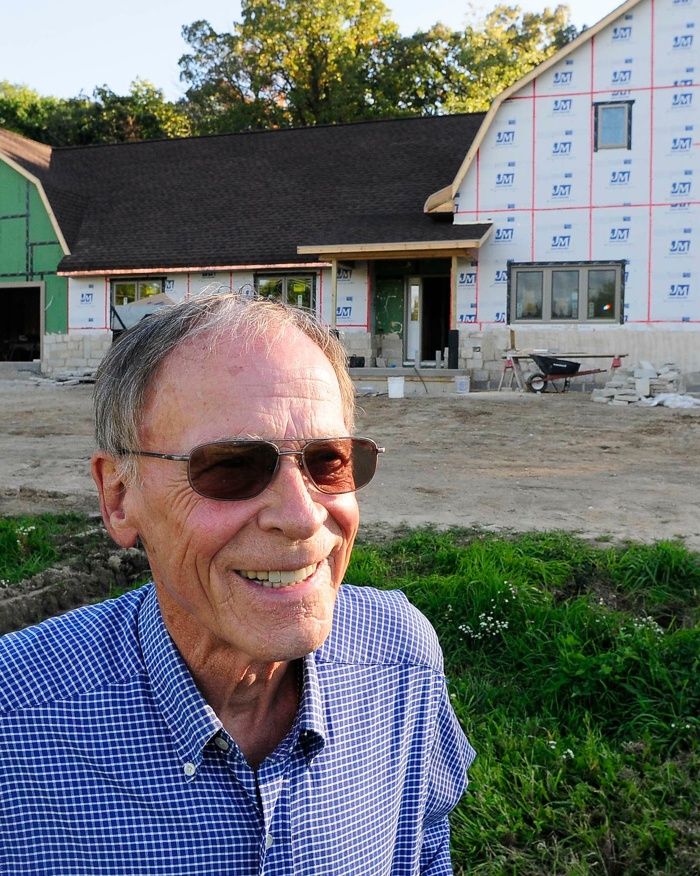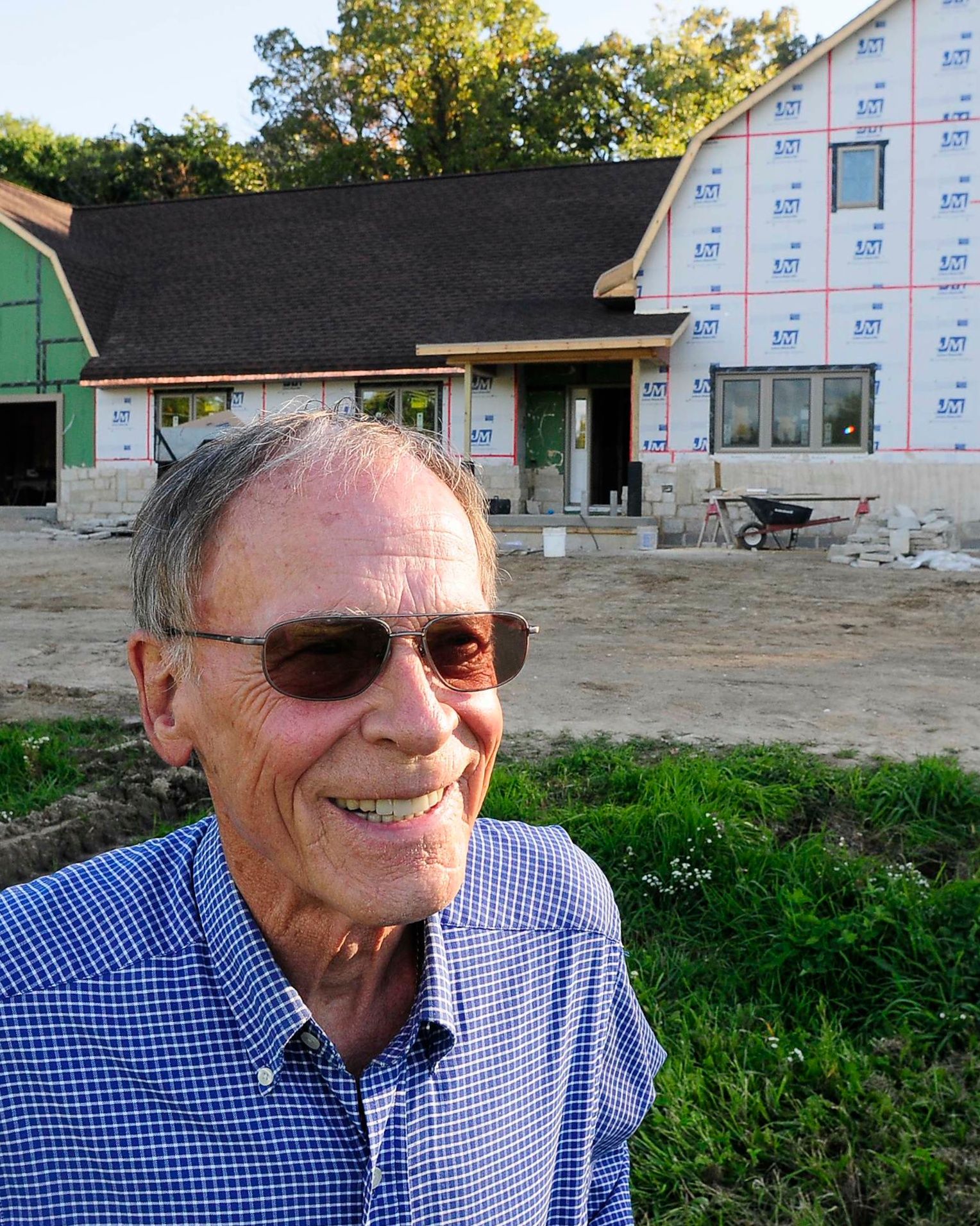
There was just one thing that Jon Flood didn’t like about the old houses he and his wife had lived in over the years: It took too much energy to keep them comfortable.
“I’ve always been an advocate of frugal living,” the 74-year-old retired educator said by telephone from Fond du Lac, Wis., recently. “I’ve never lived in a brand-new home. My wife and I, when we were first married, lived in a log cabin, and we progressed to our current home, which was built in 1909. We loved all the old houses we lived in, but as I grew older, I began to realize they were very expensive automobiles, so to speak, to drive.”
When his son suggested several years ago that they build a new house near his, the idea was appealing on more than one level. Flood began reading up on energy-efficient construction and soon realized his new house was not only an opportunity to live more comfortably but also a way to demonstrate to a new generation of builders and homeowners how much energy could be saved with state-of-the-art construction.
He decided to split the 2,370-sq. ft. house into two parts. Half would be built to meet Energy Star requirements, the other half to the much tougher Passivhaus standard.
Although Flood’s wife died, he pressed ahead with the project, and with the help of his photojournalist son Patrick, he is documenting the construction process. Patrick has taken both stills and video of the project, some of which has been published in the local newspaper.
Flood will move into the new house next April.
‘We’re used to wasting money’
Flood’s interest in efficiency goes back a long way. He read the 1984 report on government waste written by the Grace Commission and later poked into the cost of heating government buildings in Wisconsin (“astronomical,” he says).
When it came to the houses he had been living in, Flood saw little difference between the way houses were built in 1909 and the way they’re typically built today. High-school level construction courses in Wisconsin seemed to have essentially the same curriculum they did a century ago, he said.
He compared that with the spread of Passivhaus construction in Europe, where thousands of these very tight, energy-efficient homes have been built.
“The United States is very much behind Europe,” he said, “but that’s not surprising because Europeans have been paying through the nose for energy for 40 or 50 years. We’re used to wasting energy.”
His new-home project blossomed into both an opportunity to educate others and a chance to show the differences in energy consumption between different types of construction. A video he and his son produce will be offered to the local school district.
Builder is coaxed back from retirement
Dave Flagstad had built more than 100 houses over his career, and at the age of 65, he had been starting to think about retirement when Flood’s project came along. Although he’s known about the building techniques that Flood intended to use, Flagstad had never had the chance to build a house exactly like this one. He signed on as general contractor.
On the Passivhaus side of the house, Flagstad used double stud-wall construction incorporating a 3/4-in. sheet of foil-faced polyisocyanurate foam insulation and 1-1/2-in.-thick Zip System insulated sheathing on the outside, then a 2×6 wall with the outer 2 in. sprayed with closed-cell foam, and an inner 2×4 stud wall. Walls have a total of 11 in. of blown-in fiberglass insulation, for an overall R-value of 68.
Ceilings have 2 in. of closed-cell foam followed by 32 in. of blown-in fiberglass, which Flagstad estimated at an overall R-value of 100-plus.
The house has a full basement. Footings and exterior foundation walls are wrapped in 2 in. of XPS foam, with 4 in. of rigid foam under the slab. On the inside of the foundation walls, Flagstad sprayed 2 in. of closed-cell foam, followed by a 2×4 wall filled with R-13 fiberglass batts.
Windows are triple-glazed Marvin tilt-and-turns. This portion of the house is heated and cooled with a single-head ductless minisplit heat pump.
The Energy Star side of the house gets the same air-sealing and exterior foam detailing, a single 2×6 wall with the same closed-cell foam detail, and 3-1/2 in. of blown-in fiberglass insulation. It’s heated with a forced-air propane furnace. Windows are double-glazed, a mix of double-hungs and casements.
Flagstad said the house has been blower-door tested to 0.2 air changes per hour at a pressure difference of 50 pascals, an extremely low rate of air leakage.
Costs estimated at $401,000
Building costs were about $401,000, Flagstad said, or about $169 per sq. ft., which included some site work as well as building construction. Costs could have been lower, but Flood wanted some nonstandard detailing, such as 12-in. concrete walls in the foundation, a hedge against foundation cracks that are not uncommon in this area of clay-rich soils, and a lifetime asphalt roof.
Flood, a woodworker, also said he didn’t want any plastic lumber in the house and was opting for oak detailing instead, including an oak library he was building himself.
Each side of the house has its own 200-amp electric service and meter. Flood plans to live in the Passivhaus side of the building, which includes a bedroom, a bathroom, a living room, and the kitchen. On the non-Passivhaus side, the house includes a more formal entry, two bedrooms, a laundry, another bathroom, and the library.
Fine Homebuilding Recommended Products
Fine Homebuilding receives a commission for items purchased through links on this site, including Amazon Associates and other affiliate advertising programs.

Affordable IR Camera

Reliable Crimp Connectors

Handy Heat Gun






























View Comments
While the Building Regulations require that new buildings achieve minimum standards of energy efficiency.Since a house being built today can be expected to be occupied for 60 years or more, an energy-efficient design can yield
considerable savings over its lifetime.
Although some energy-saving measures can be implemented at a later stage,retrofitting is often more expensive and less effective than incorporation when the house is being built.
Apart from reducing fuel and electricity bills, an energy-efficient home design can provide improved comfort for occupants while helping to protect the environment.
It can also provide insurance against future increases in fuel costs.Building a more energy efficient home means you can reduce the amount of energy you use and lower your cost of living. From the layout of your rooms to the position of your windows.
Great house!!..
Funny how the guy is interested in building an "energy efficient home." and has considered himself "an advocate for frugal living" , but builds a 2,370 sqft house for only himself to live in. Hmmmm?